Military Books by Paul Els
MILITARY BOOKS BY PAUL ELS
About the author
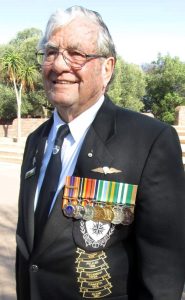
Warrant Officer First Class (retired) Paul J. Els
Warrant Officer First Class (retired) Paul J. Els descendant of Boer General Louis Botha, Voortrekkers Andries Potgieter and Hans Dons de Lange, was born in Empangeni, Zululand.
After completing his schooling in Durban, he enlisted in the Signal Corps of the South African Defence Force in January 1964. At the end of that year, he was transferred to 5 SA Infantry Battalion in Ladysmith. He did a three-month stint on the border in 1968, after which he spent a year on Gough Island as radio operator.
On his return to South Africa in 1969, he became an instructor at Signal School in Voortrekkerhoogte and was deployed for a few weeks towards the end of that year in Africa. In 1972 he married Annelie. Two children were born of this marriage – Johan in 1974, and Nelie in 1976. Paul and Annelie have four granddaughters and one grandson.
During 1975/1976 he took part in Operation Savannah and at the end of 1978 he was transferred to SA Special Forces as the first long distance non-commissioned officer radio operator and cryptographer for 5 Reconnaissance Commando. At the age of 36 years he completed the Parachute Course at DukuDuku and was awarded his parachute wings.
In 1984 he became Regimental Sergeant-Major of the Northern Transvaal Command Signals Unit, and from 1992 worked for the Army Intelligence Corps.
Having retired in 1996, he wrote his first book: We Fear Naught but God, followed by Ongulambashe: Die begin van die Bosoorlog and the English version Ongulambashe: Where the bush war began and revised We Fear Naught but God; We Dare – The Hunter Group; We Conquer from Above; The Chronicles of the Height; Four SADF Operations; Paratus; Mobile Watch and Valhalla. And more!
All books is available from:
Ilette Strydom epos@groep7.co.za 0824490574
GROEP 7 DRUKKERS & UITGEWERS
We fear Naught but God
Pictorial addition
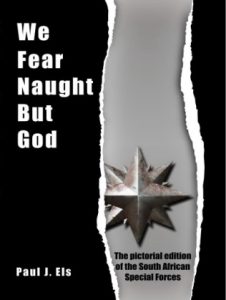
WO1 Paul J. Els served with the ‘Recces’ during his military career, and is therefore in a privileged position, being able to describe much of their history with some accuracy. As a result of this service, he has put together a 423 page hard cover, full colour, history covering the formation and some operations of all the ‘Recce’ units formed, from inception to their eventual disbandment under the new SANDF. Included within these pages are no fewer than 2000 photographs, colour/black-and-white, most of which would be new to readers
(This book is sold out and only available in black and white)
There is the occasional personal account, mainly of men who were awarded gallantry decorations for outstanding service, and the circumstances under which the awards were obtained. Unit heraldry is also covered, including badges, emblems and traditions. The book concludes with a series of appendices, including a Roll of Honor, listing all Special Forces casualties by rank, name, date of death and regiment. There is also a comprehensive list of SF members who were awarded gallantry decorations, entities in support of SA Special Forces and a description of weapons used by them, the latter including photographs.
Ongulumbashe – Where The Bushwar Began/
Ongulumbashe die begin van die bosoorlog.

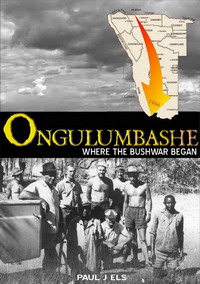
The author is a retired Warrant-Officer (Class 1) of the former South African Defence Force.
‘Catch them’ was the order from Prime Minister Verwoerd. This was the first time that a combined attack force of police and troops, with the support of the South African Air Force acted against intruders. Their attack on the Ongulumbashe base on August 26th, 1966 was probably responsible for the start of the 23 years border war.
This is an action packed eye witness report and a look behind the scenes of Operation Blouwildebees. It was an operation with many firsts, which will be particularly enjoyed by history lovers. It also gives an insight on the way of life of the Ovambo’s, the vast countryside and the political situation of the time.
This eyewitness account is a must for the serious collector and researcher of the revolutionary wars in Southern Africa. This book describes the first clash that took place between elements of the South African police, army and air force on the one side and SWAPO’s Plan soldiers on the other side.
The foreword was written by a former Commander of the Security Branch in SWA and a Commissioner of the SA Police, General J.V. ‘Johan’ van der Merwe while the epilogue is written by former Chief SADF General J.J. ‘Jannie’ Geldenhuys.
The book also describes how members of the Security Branch of the SA Police infiltrated the area as employees of PASCO ostensibly a private company. (The name PASCO is derived from South African Police = SAP = PAS + Company = PASCO).
A special agent is recruited and the Security Branch spy and infiltrate the terrorists. All this action leads to the arrest and conviction of several terrorists. This humble operation ‘Blouwildebeest’ leads to a bitter and sophisticated war in South Western Africa including Angola. Books are A5, soft cover. English 290 and Afrikaans 261 pages.
Available in English and Afrikaans.
We Conquer From Above
The history Of 1 Parachute Battalion, 1961 – 1991
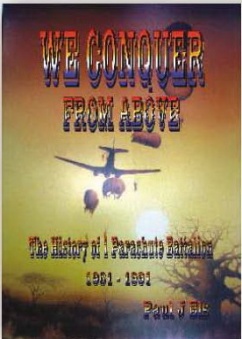
The story of the South African 1 Parachute Battalion (popularly known as “Parabats”) from inception in 1960 up to 1991. In 1966, units of 1 Parachute Battalion first participated in operations as part of the South African Border War in South-West Africa (now Namibia).
This involvement was eventually to last for more than twenty years. This battalion also participated in South Africa’s first major airborne operation in 1978 – ‘Operation Reindeer’ – the Battle of Cassinga, where they, together with other battalions attacked a large SWAPO base in Angola, successfully capturing it. The book includes training procedures / methods, operational stories, and many other information, such as parades, barracks, and some private stories.
Soft cover , A4 size, 336 pages. Approx. 1000 black/white photos.
Saturday Soldiers – The Hunter Group
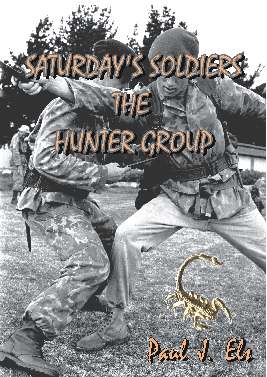
(Formerly titled ‘We Dare: The Hunter Group’) Paul Els, has produced a brief book about the little known Hunter Group.
In 1966, forward thinking OC Gil Van Kerckhoven of the South African Irish Regiment saw that the quality and morale of new soldiers was very low due to in-effective training. He also felt that with the up-coming threat of guerrilla type of warfare, that the conventional warfare mind-set of the SADF was outdated. After much opposition, he finally set about the formation of the Hunter Group in 1968 with 13 founding members. The primary aim of this group was to provide specialist anti-guerrilla training to volunteers who wanted more training that was normally provided to National Servicemen / Infantrymen at the time. In June 1969, over 60 men became the first to wear the converted and distinctive scorpion badge signifying that they had completed a minimum of 100 hours of Hunter Training.
By 1970, over 700 men had been Hunter trained. In 1974, Hunter Group was disbanded and 29 of its members attended the SAS style selection course run by 1 Reconnaissance Commando. Those who passed selection formed 2 Reconnaissance Commando. This book gives a brief overview of what the Hunter Group was all about, it’s key members, training content, and various articles written by Hunter Group members at the time.
July 2011, 3rd Edition. Soft back, A4 size. 72 pages. B/W photos, drawings. Autographed.
(‘Hunter Group’ DVD comprising of 3 clips originated from 8mm films (Total 1hr 15min) – Hunter Group Recruiting film, Footage of Hunter training, Hunter patrol work, is available from the author – on request).
Four SADF Operations
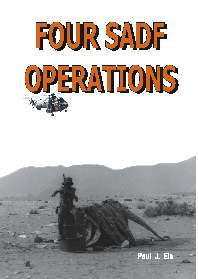
The book contains 68 pages, is A4 and well-illustrated with 110 photographs; of which many are being published for the first time!
It contains a short description of four SADF operations. Each operation has its own story and its own heroes.
- Operation Swivel, is the first operation where in the first qualified SA Paratroopers took part in.
- Operation Hurdle, must have been the first operation to investigate USSR involvement into Southern Africa, by a South African Army element.
- Operation Dikmelk, was an operation where not one shot was fired or any enemy seen.
- Operation Super, was an unexpected operation with possibly the most insurgents killed in one day by a small group of soldiers from 32 Battalion and gunships.
Paratus
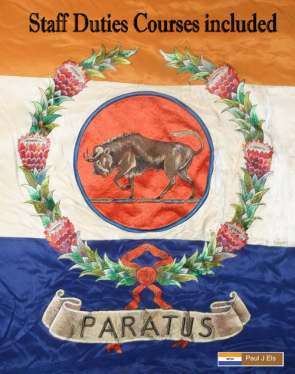
The SA Army College building known as the Paratus building is the most historical Military building in Thaba Tshwane. Many photographs of the building through the years appear in the book.
Many soldiers’ attended courses in Paratus and it is estimated that over 1900 Military officers took part in the 78 SA Army Staff Duties Courses presented at the College. Most of these courses course photograph appears in the book and the name list of all courses.
Soft cover, 394 pages and 1200 photos.

Chronicles of the Heights
The book is based on the history of the Military Town, south of Pretoria. The ground it is situated on was part of Town grounds of Pretoria. With the conquer of Pretoria in 1900 the British troops over crowded Pretoria and Lord Kitchener decided to move them out of the town area. He instructed a health officer to investigate the higher area south of Pretoria, which was still government property. With the results of the report from this officer it was decided to move the troops into these high grounds and to establish a Cantonment.
Troops were then moved into the ‘Pretoria Cantonment’ and buildings were erected, which was imported from Britain and India. Even a railway line was laid from the now Lyttelton Station to the Cantonment in c. 1903.
In 1904 the Cantonment was named Roberts Heights and by then it was a well organised Military town with it own Military Institute building, a two story home for the British Forces Commander, a Gymnasium, race course, shooting ranges, bases for Military units, hospital, streets with its own names, etc
By 1914 most of the British troops left the area to take part in World War I and the area handed over to the UDF.
In 1939 the town seen its name changed to Voortrekkerhoogte to co-inside with the laying of the Voortrekker Monument corner stone. Then it had another name changed to Thaba Tshwane, on 19 May 1998. This is also up to this date this book will cover.
The Heights (or Die Hoogte) as it was known to many has a reach history to many soldiers and family that spent time there. This book includes many aspects of the town like:
Schools, Churches, Hospitals, Cemetery, Military Units, Military Messes, Training, Sports, Happenings, Streets, Buildings, etc.
The main purpose of the Heights is training of soldiers as from basic training up too to become an officer and/or General.
The chronicles of Valhalla, a suburb of Pretoria is included in the book and also outstanding areas surrounding the Heights.
The book is in two volumes, containing 726 pages, with over 1600 B/W photos.
The book contains an Index of +- 3800 names
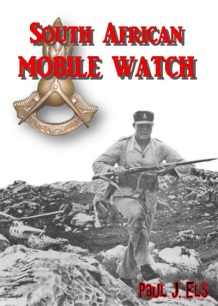
South African Mobile Watch
In the late 1950’s two Military units was established to assist in national emergence or natural disasters.
In the short period of the existence of these units, they assisted in such a requirements, which included suppressing uprising, building bridges, supplying water and transporting sheep.
The book is 150 pages, A5, B/W and contains 190 photographs.

Valhalla
The book is 195 pages, A5, B/W and contains 190 photographs on the history of Valhalla, a suburb of Pretoria.
On 15 September 1856 Daniel Jacobus Erasmus registered the farm Zwartkop (356JR) in his name. On 15 September 1856 Daniel transferred his farm in three portions to F.E. Erasmus, R.E. Erasmus and K.E. Erasmus.
Mr Dale Lace bought on 28 September 1901 2702 morgen, which later became Valhalla. In 1905 Mr Henricus Lorentz (Wierdapark) and Sir Johannes Gerard (John) van Boeschoten (Eldoraigne) bought a portion of the farm ‘Zwartkop’ (356JR).
The Valhalla portion of Mr Lace was sold to Lyttelton Townships (Pty) Ltd. In 1933 the Valhalla portion was bought by a Norwegian lady, Mrs Olive Maud Kneen.
DIE WIT KERK
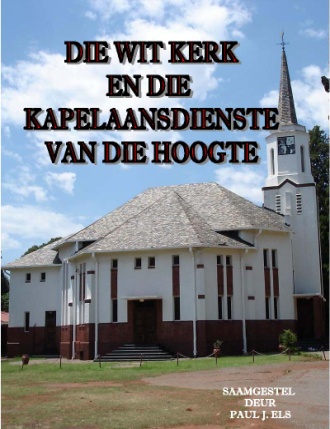
Die boek gee die geskiedenis van die Wit Kerk in Voortrekkerhoogte.
THE HEIGHTS CEMETERIES
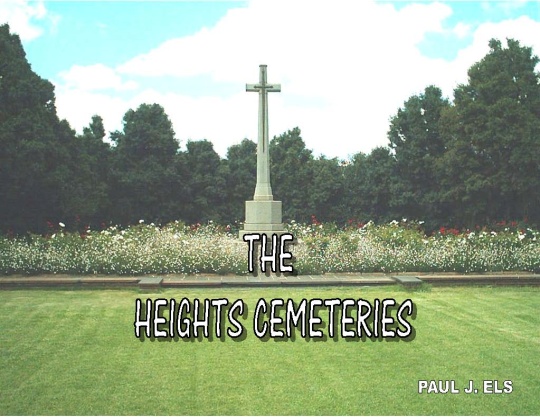
This book covers all who was buried in Voortrekkerhoogte.
CASUALTIES 1946 – 1994

Die boek gee ‘n lys van SAW lede wat gesterf het tydens diens.
BOYS AT WAR OPERATION SAVANNAH
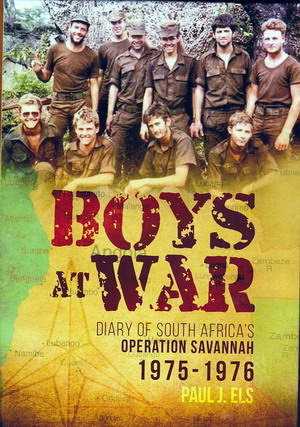
This book is the timeline of Operation Savannah.
ONS WAS DAAR SEKTOR 10

Die boek gee die volle geskiedenis van Ovambo en Kakaoveld.
ONS WAS DAAR WALVISBAAI
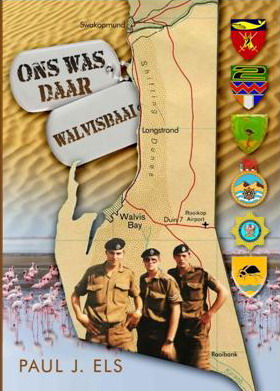
Die boek beskryf die storie oor Walvisbaai en die stigting van 2 SAI Bataljon.
AMANZI SOUTHERN AFRICA
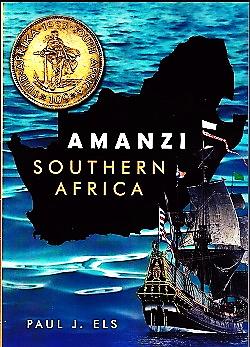
Die beskryf van al die aktiwiteite rondom die kus van Suid Afrika
WHO’S WHO OF THE UDF/SADF
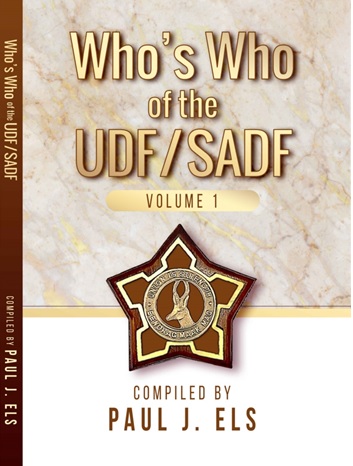
This cover a few of the many men that served in uniform
DIE STOMPKANT SOLDATE

Die boek gee die geskiedenis van die Genie eenheid

Mozambique South African Eastern Border war.
This book gives you the information on happening’s in Mozambique and the story around RENAMO movement
GEORGE CIVIL DEFENCE GIRLS
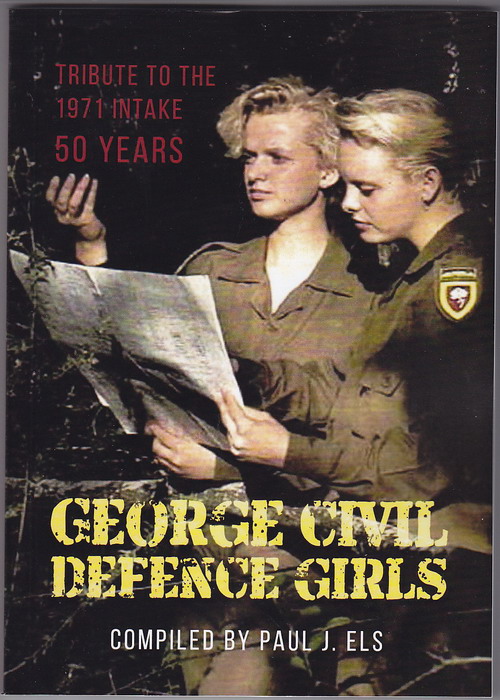
In 1971 the women College was formed in George to train women as members of the SADF.
WOMEN IN UNIFORMS WORLD WAR 1 AND 2
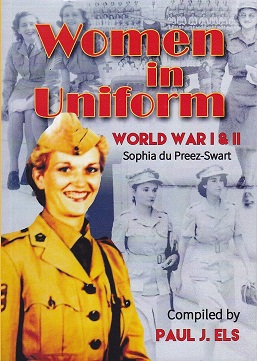
The book covers women who served in uniform in SA
MODERN WOMEN IN UNIFORM
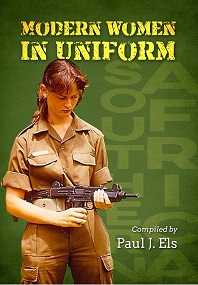
The book covers about women in uniform as from 1971 till members in the new SANDF.
GEHEIM VAN DIE BERGE / THE SECRETS OF THE MOUTAINS
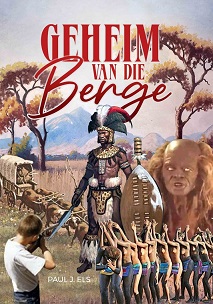

‘n Fuksie met geskiedenis van SA in beskikbaar in Afrikaans en Engels.
GENADE VAN BO
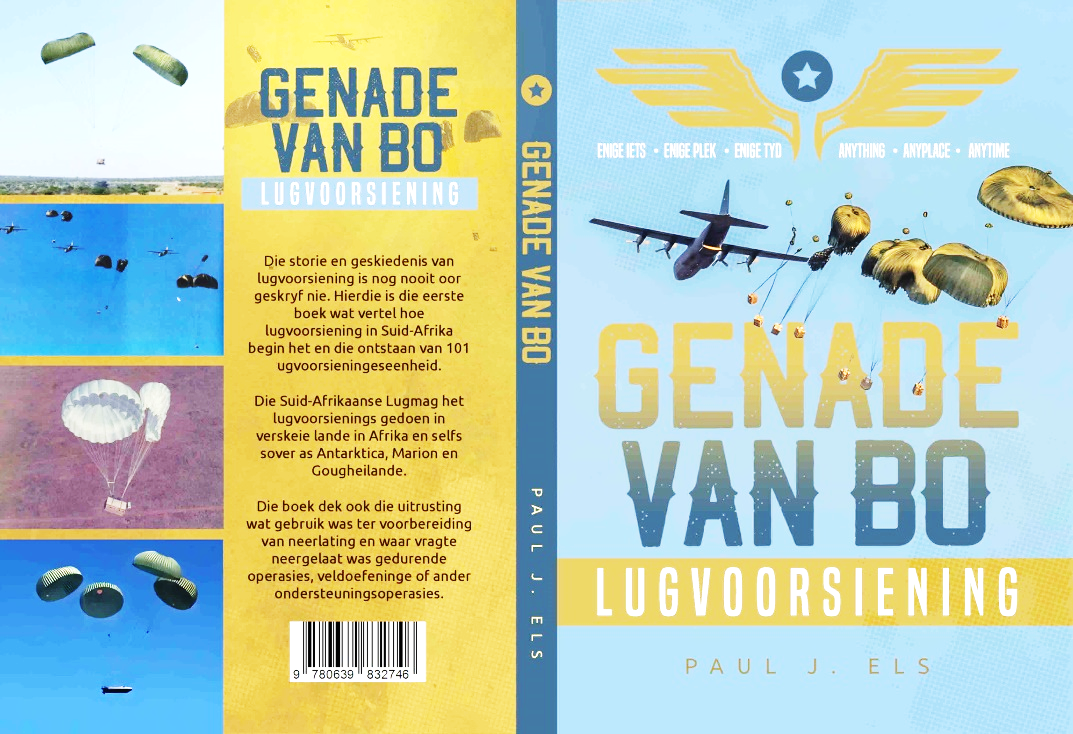
FUTURE BOOK
WOMEN OF THE COLD WAR IN AFRICA
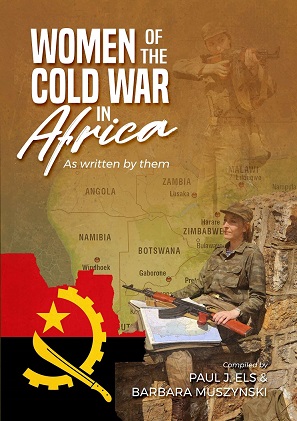
And:
UNITA DIVERS, CRY OF THE FISH EAGLE, etc
